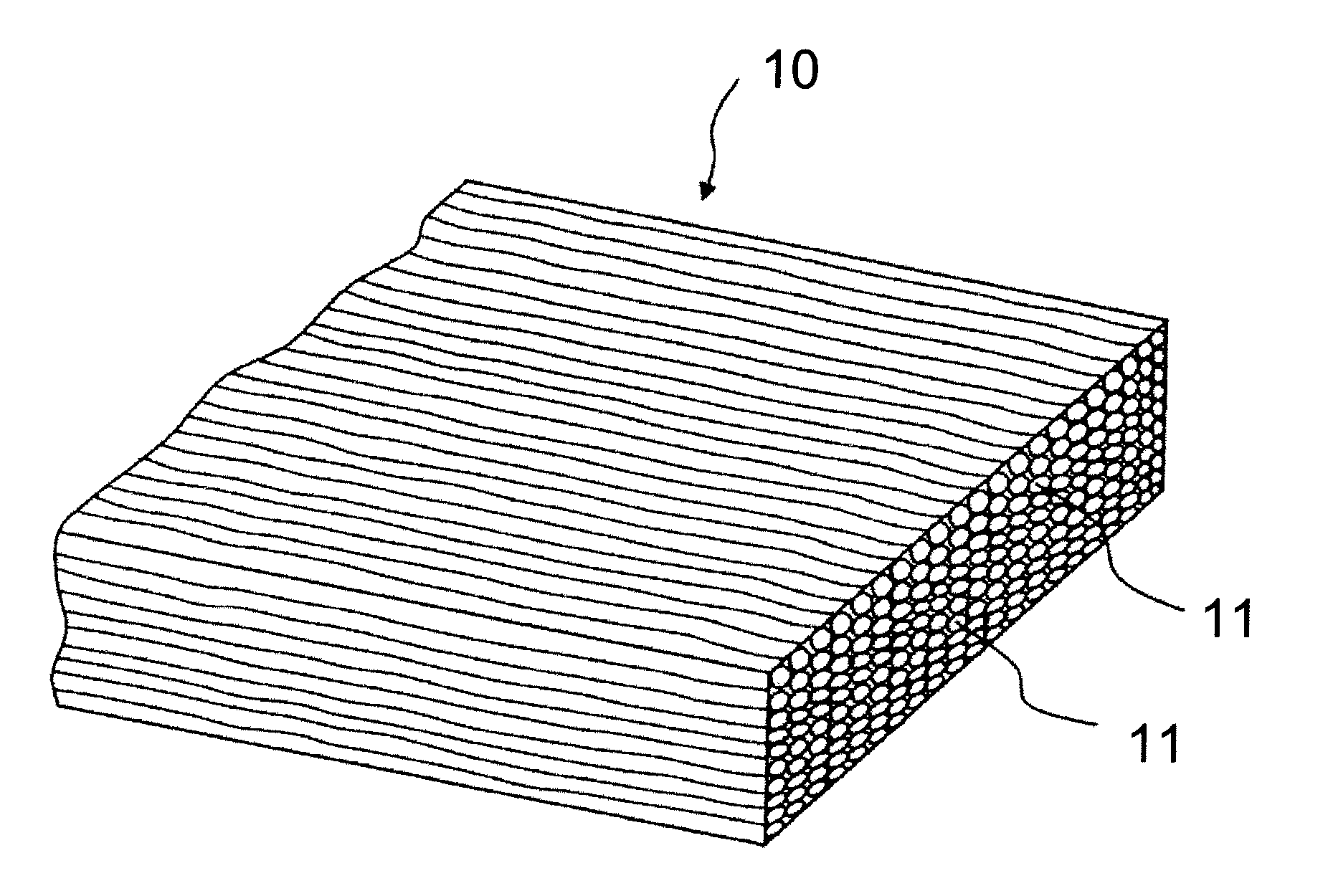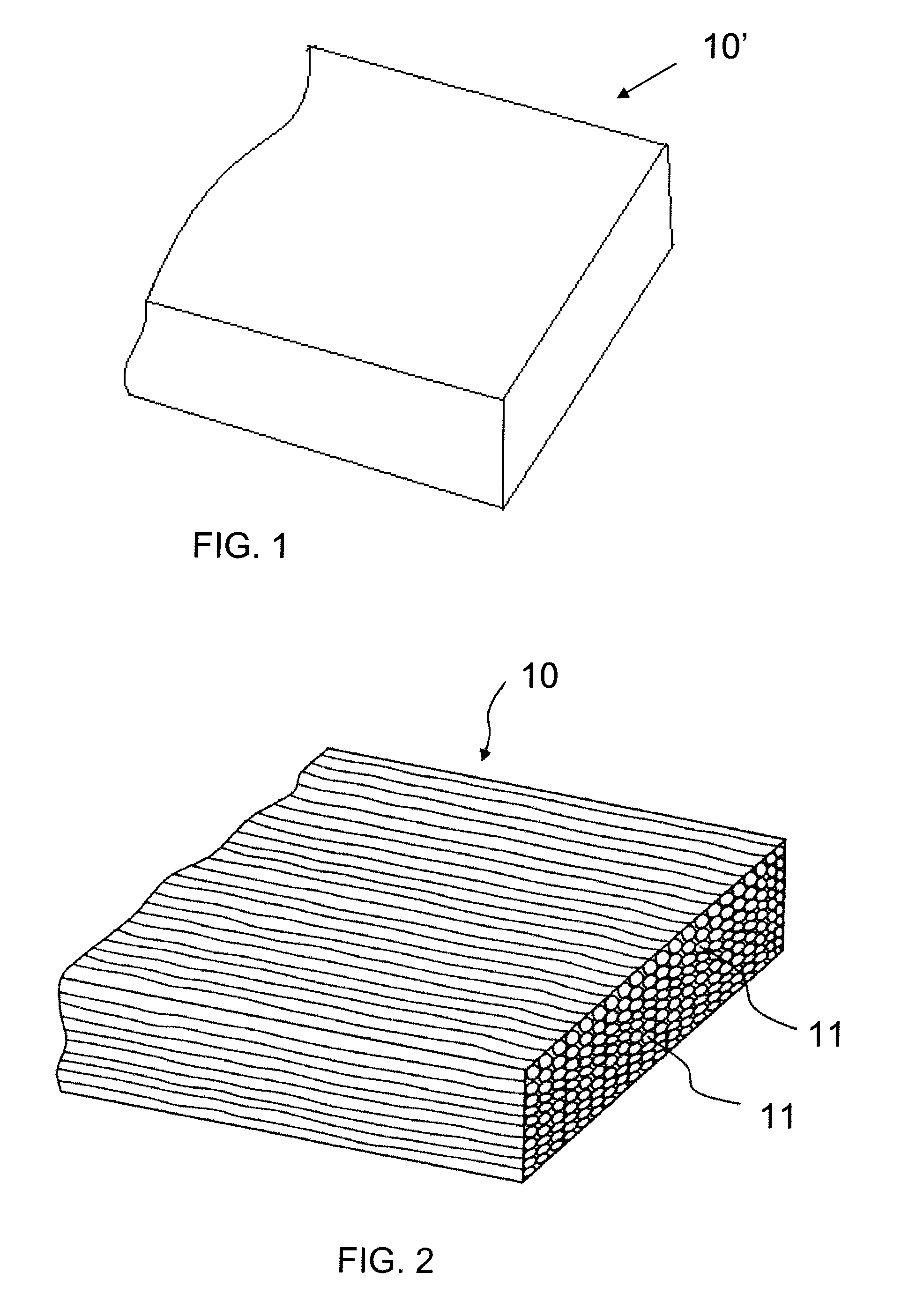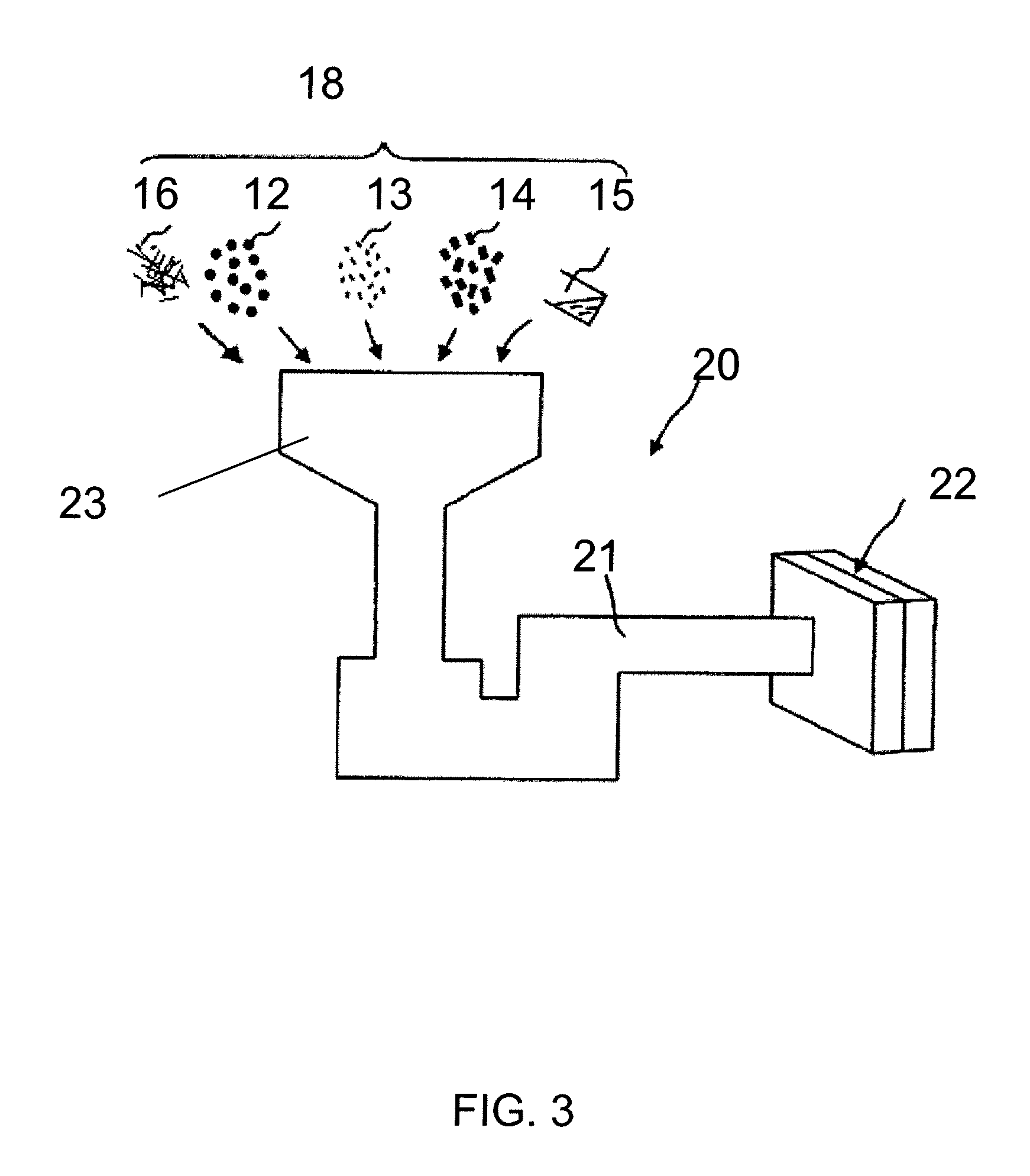Microfoam and its manufacturing method
a technology of microfoam and manufacturing method, which is applied in the field of microfoam and its manufacturing method, can solve the problems of increasing the volume of landfill, conventional polymer foamed materials that are not biodegradable or undergo slow degradation processes in the natural environment, and conventional polymer foamed materials that may remain in the soil, so as to improve the buffer and insulation characteristics and enhance the performance of the foamed material
- Summary
- Abstract
- Description
- Claims
- Application Information
AI Technical Summary
Benefits of technology
Problems solved by technology
Method used
Image
Examples
Embodiment Construction
[0027]In the following detailed description, only certain exemplary embodiments of the present invention are shown and described, by way of illustration. As those skilled in the art would recognize, the invention may be embodied in many different forms and should not be construed as being limited to the embodiments set forth herein. Like reference numerals designate like elements throughout the specification.
[0028]Biodegradable foamed materials and processes for producing the same are described below in more detail. A biodegradable foamed material according to an embodiment of the present invention contains paper powder, starch, and a biodegradable resin as a major component or a main portion of a foam composite. Additives can be used to improve the strength and performance of the foamed materials. Nonlimiting examples of suitable additives include antioxidant, boric acid, UV absorbent, calcium carbonate, and sodium stannic acid.
[0029]In one embodiment, fine paper powder is being ma...
PUM
| Property | Measurement | Unit |
|---|---|---|
| Temperature | aaaaa | aaaaa |
| Length | aaaaa | aaaaa |
| Length | aaaaa | aaaaa |
Abstract
Description
Claims
Application Information
 Login to View More
Login to View More - R&D
- Intellectual Property
- Life Sciences
- Materials
- Tech Scout
- Unparalleled Data Quality
- Higher Quality Content
- 60% Fewer Hallucinations
Browse by: Latest US Patents, China's latest patents, Technical Efficacy Thesaurus, Application Domain, Technology Topic, Popular Technical Reports.
© 2025 PatSnap. All rights reserved.Legal|Privacy policy|Modern Slavery Act Transparency Statement|Sitemap|About US| Contact US: help@patsnap.com



